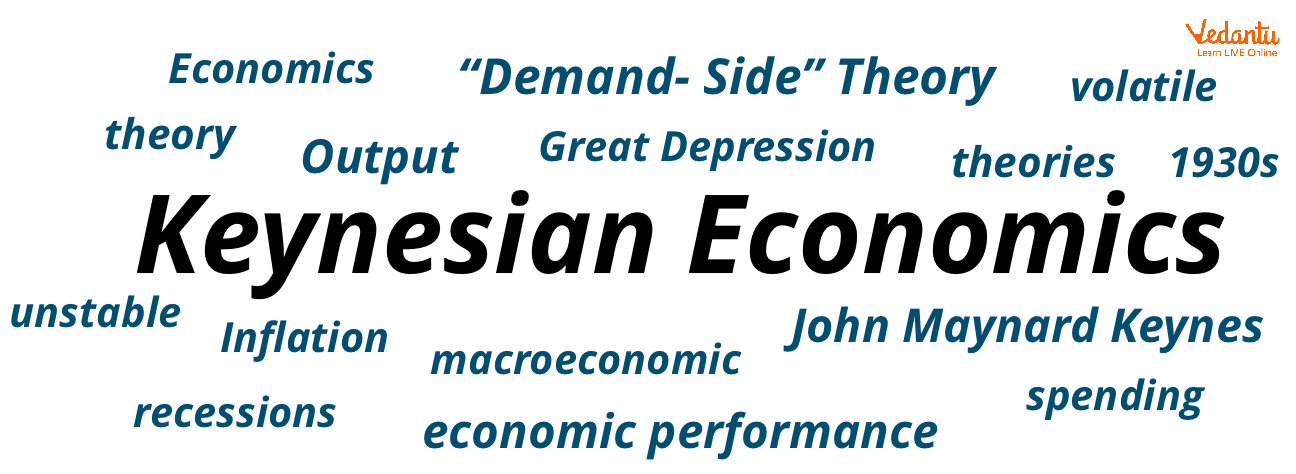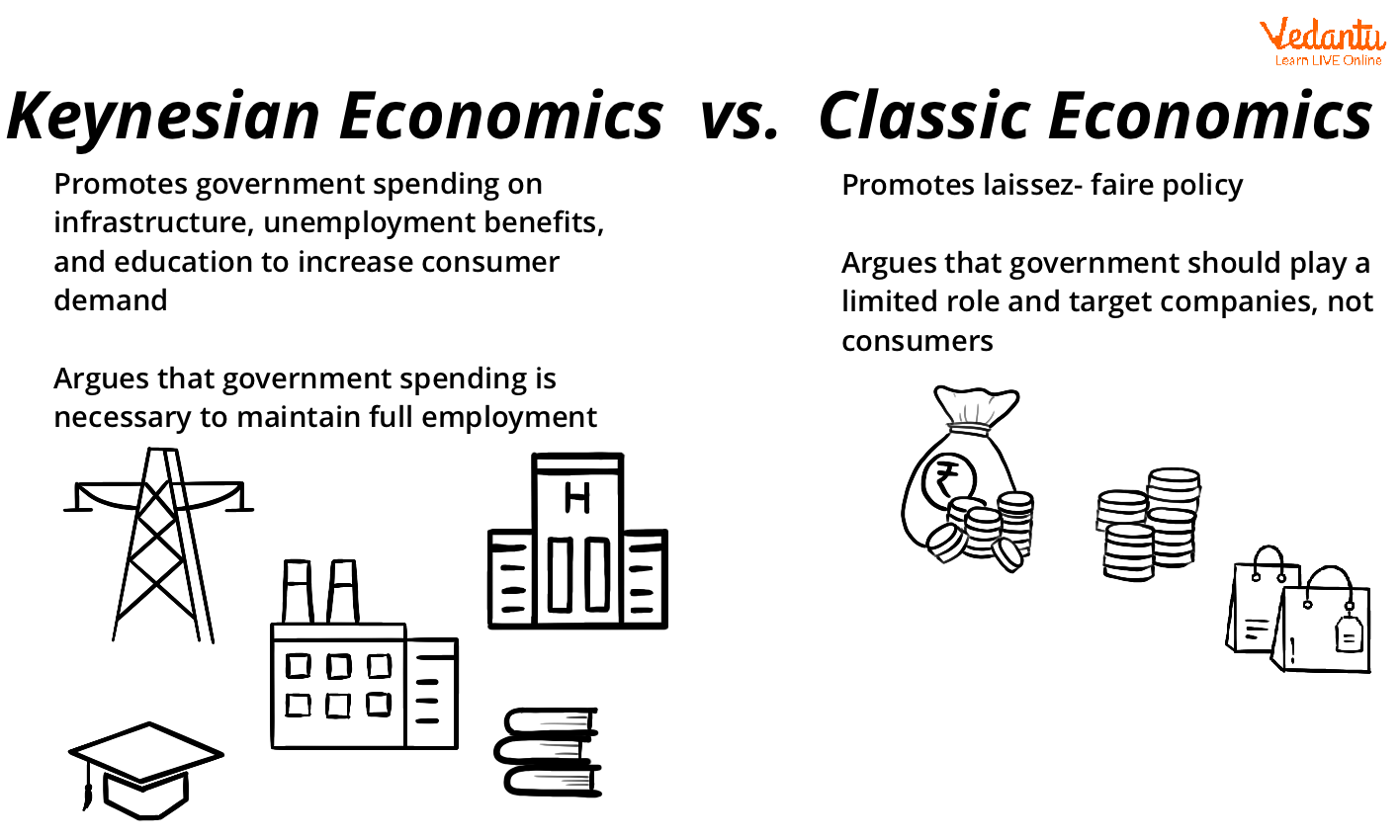




An Introduction to Keynesian Economics
John Maynard Keynes developed Keynesian Economics in the 1930s. This economics is additionally known as demand-side economics. Keynes developed this theory to elucidate the world's understanding and recovery from the Great Depression. According to Keynesians, demand plays a crucial role in the economy. This theory relates to how aggregate demand impacts output and inflation. Keynes also explained various theoretical principles regarding this in his book The General Theory of Employment, Interest, and Money.

An Introduction
Meaning of Keynesian Economics
Keynesian economic theory is a macroeconomic theory that is related to total spending in the economy and its effects on output, employment, and inflation. This theory focuses on the changes within the economy over the short run. According to this theory, government intervention can strengthen the economy.
Features of Keynesian Theory
The basic features of Keynes’s theory are:
Effective demand is controlled by aggregate demand and supply.
Employment and income depend on effective demand.
As aggregate supply remains constant in the short run, Keynes focused on aggregate demand.
Aggregate demand in a two-sector economy is determined by: i) consumption expenditure and ii) investment expenditure.
Consumption expenditure is determined by the size of income and propensity to consume.
Propensity to consume is of two types - average propensity to consume and marginal propensity to consume.
Difference Between Keynesian Economics and Monetarist Economics
Keynesian economic theory states that the government should increase the demand to boost the economy.
On the other hand, monetarist economics states that the government can encourage economic stability by controlling the amount of money in an economy.
Keynesian Economics VS Monetarist Economics

Difference between Keynesian Economics and Monetarist Economics
Difference Between Classical and Keynesian Economics
Keynesian economics believes that government spending is the most important economic activity. On the other hand, classical economics believes that a self-regulating economy is efficient and there is no need for government intervention.
Classical Economics VS Keynesian Economics

Difference between Classical Economics and Keynesian Economics
Keynes VS Hayek
John Maynard Keynes and Freidrich August Hayek were the two economists of the early twentieth century. Both of them have different opinions regarding the same matter. According to Keynes, the government must play an important role in controlling unemployment. Deficit spending was considered the only way to bring an economy out of the depression.
But Hayek criticised Keynes’s belief in monetary policy that low-interest rates through increased money supply. According to him, this will increase inflation, leading to malinvestment as interest rates are quite low.
Differentiate Between Classical and Keynesian Theory of Employment
Conclusion
In conclusion, we may conclude that Keynesian economics is based on the fact that the government should manage demand in an economy. This theory supported higher employment levels in the economy. When the government invests in various public projects, this increases employment directly. But the major drawback of this theory is that overdoing it can result in inflation.
FAQs on Keynesian Economics vs. Monetarist Economics
1. What are the cons of Keynesian economics?
Some limitations of Keynesian economics are:
When the government borrows more, this increases the interest rates, further discouraging private sector investment.
This theory is not applicable in every country. These sorts of theories have no relevance in developing countries.
Keynes’s theory provides solutions only in the short run. Thus, it ignores long-run problems.
This theory only relies on investment to increase employment in the economy.
This theory only deals with aggregate concepts like aggregate demand, supply, and total investment.
2. Write about the main points of Keynesian economics.
The following are the three main points of Keynesian economics:
Aggregate demand is influenced by economic decisions. Keynesian economic theory supports a mixed economy guided by the private sector and operated by the government.
Prices respond slowly to changes in demand and supply, leading to periodic shortages and surpluses.
Changes in aggregate demand have an impact on real output and employment. Keynes believed that fluctuations in any spending component could cause output to change. For example, if government spending increases while other components remain constant, it will change the output.
3. What causes inflation in Keynesian theory?
The following are some causes:
Growing Economy: When consumers spend more and take more debt, they feel confident. This leads to an increase in demand and higher prices.
Government Spending: When the government spends more, prices go up.
Increasing Export Demand: A sudden rise in exports also is a factor that causes inflation.
Inflation Expectations: Some companies increase their prices based on future expectations regarding inflation.
Money Supply: An expansion of money supply regarding a few goods also increases prices.





















